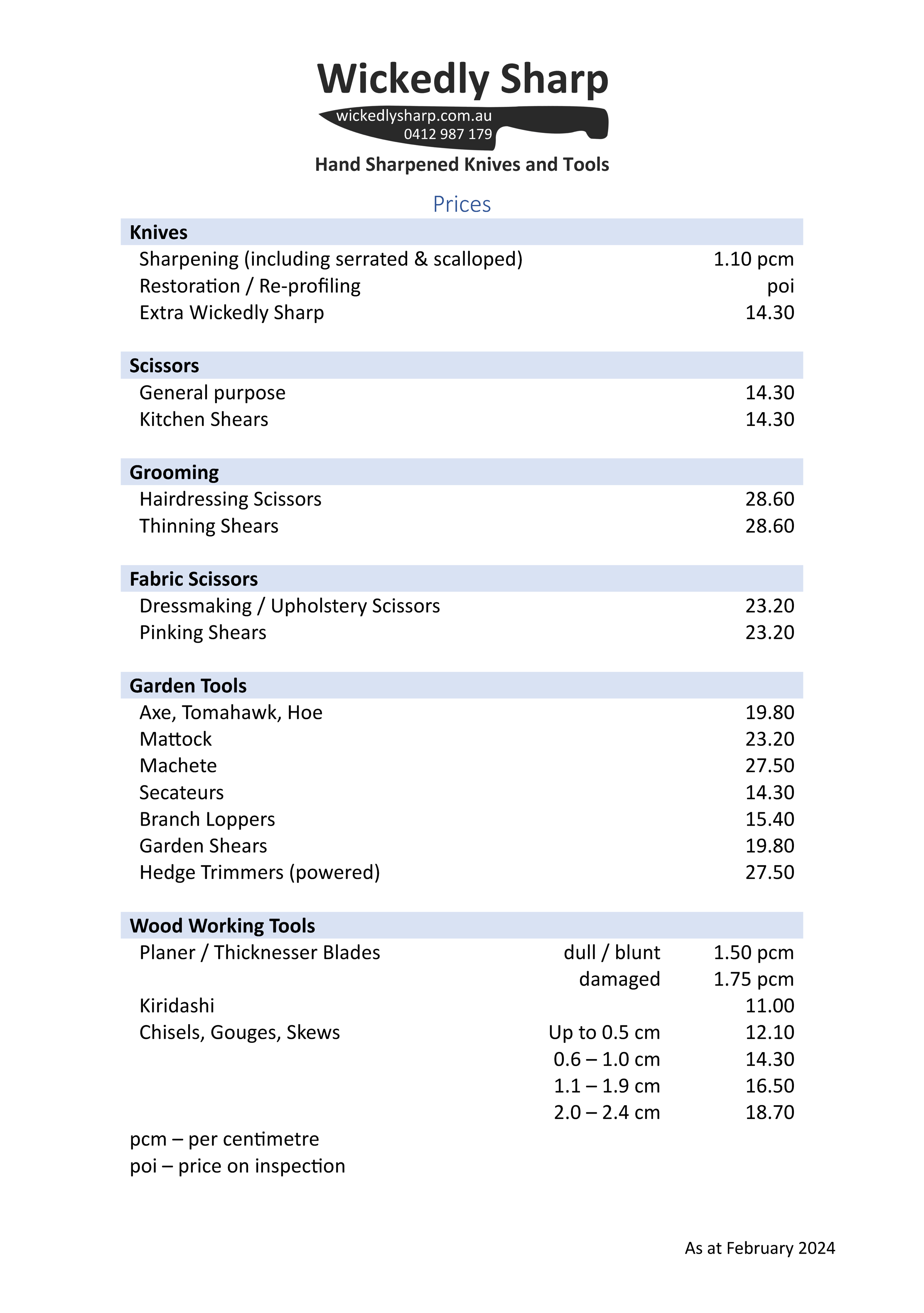Wickedly Sharp
Hand Sharpened Knives and Tools

Pricing
Investment in Safety and Longevity
Getting your knives and tools sharpened on a regular basis is an investment in the longevity of your knives and tools. Think of it as getting your car serviced.
When working with sharp knives and tools, less effort is needed to make the knife or tool cut. This means better control, less fatigue and safer to use.
Determination of your knife or tool’s needs
The cost to restore a knife to Wickedly Sharp is determined by the length of the edge, and condition to the edge.
The condition that the edge is in is determined by feel, paper cut test and microscopic inspection (20x magnification). Its condition will be rated as dull, blunt or damaged (shallow, moderate or deep).
A Dull edge only requires sharpening.
A blunt or damaged edge firstly needs to have the damage removed (to create a clean, dull edge) and then the edge can be sharpened.
Thank You!
I would like to thank my clients for their feedback on how I could improve the service I provide. One of the main points was to make the pricing structure simpler! This has been done and with reduction in the cost of the investment to you while still receiving the highest standards of care for your knives, scissors and tools and personal service.

Sharpening Terminology
Dull- a knife that will still cut paper but very badly. More likely it will be tearing rather than cutting. This knife just needs sharpening
Blunt- a knife that won’t cut paper. Requires edge restoration(making a dull edge)prior to sharpening. Note a knife that appears to be dull (as per above), may actually be blunt as the edge angle is quite flat (e.g. 20 degrees per side when it should be 15 degrees).
Damaged- a knife that has chips, nicks, edge roll or dents. Edge damage is classified as shallow, moderate or deep. Requires edge restoration (making a dull edge) prior to sharpening.
Edge restoration- the process of creating an edge where a burr forms without any nicks, chips or dents. The edge is now considered to be dull and is ready to be sharpened.
Sharpening- is the process of taking a dull knife or restored edge and sharpening it to 1500 grit.
Re-profiling / Tip repair- where a tip is missing, in most cases, this can be repaired as a part of restoring a knife with deep edge damage. However, where the tip loss is significant, the knife may require re-profiling before the edge can be restored and sharpened. Re-profiling covers significant reshaping to the knife or the edge shape.
